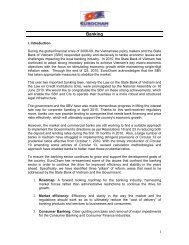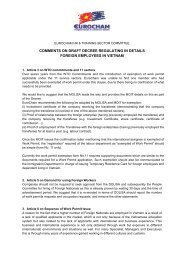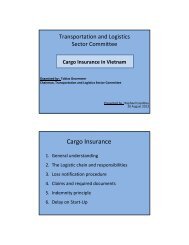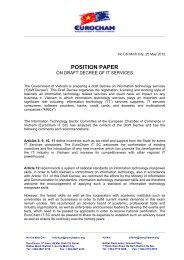ASEAN MUTUAL RECOGNITION ARRANGEMENT ON TOURISM ...
ASEAN MUTUAL RECOGNITION ARRANGEMENT ON TOURISM ...
ASEAN MUTUAL RECOGNITION ARRANGEMENT ON TOURISM ...
Create successful ePaper yourself
Turn your PDF publications into a flip-book with our unique Google optimized e-Paper software.
1 BACKGROUND TO MRATopics:1.1 Introduction1.2 Rationale for MRA for Tourism Professionals1.3 The <strong>ASEAN</strong> MRA – TP Handbook1.4 What is a Mutual Recognition Arrangement?1.5 Benefits of MRAs1.6 Purpose of MRA on Tourism Professionals1.7 How was the MRA – TP Developed?1.8 Key Elements of MRA – TP1.9 Principles for Recognition & Eligibility of Foreign Tourism Professionals1.10 The <strong>ASEAN</strong>-Australia Development Cooperation Program1.11 Impacts and ChallengesIMPORTANT <strong>ASEAN</strong> AGREEMENTS RELATED TO MRAKey terms found in this Chapter: <strong>ASEAN</strong>-Australia Development Cooperation Program (AADCP) <strong>ASEAN</strong> Mutual Recognition Arrangement on Tourism Professionals (MRA-TP) Common <strong>ASEAN</strong> Tourism Curriculum (CATC) <strong>ASEAN</strong> Task Force on Tourism Manpower Development (ATFTMD) <strong>ASEAN</strong> Tourism Professional Monitoring Committee (ATPMC) Tourism Professional Certification Board (TPCB) <strong>ASEAN</strong> Coordinating Committee on Services (CCS)1.1 IntroductionThe tourism industry contributes significantly to the overall <strong>ASEAN</strong> economy. Based onthe <strong>ASEAN</strong> Travel and Tourism Competitiveness Report 2012, it is estimated that thissector accounts for 4.6 percent of <strong>ASEAN</strong> GDP. The contribution can be as large as 10.9percent when all indirect contributions from the sector are taken into account. Inaddition, it directly employs 9.3 million people, or 3.2 percent of total employment, andindirectly supports some 25 million jobs. The growth of international tourism in <strong>ASEAN</strong>has been remarkable. In 1991, there were only 20 million international visitor arrivals to<strong>ASEAN</strong>. After 20 years, the number has grown 4 times, to more than 81 million arrivals in2011.1.2 Rationale for MRA for Tourism ProfessionalsTo ensure growth sustainability and greater contribution to the <strong>ASEAN</strong> economy, the<strong>ASEAN</strong> tourism attractiveness needs to be accompanied by excellent quality of servicesprovided by the tourism industry within the region. Having high-skilled tourism workers todeliver high-quality services should become normal practice in order to guaranteeP a g e | 4














